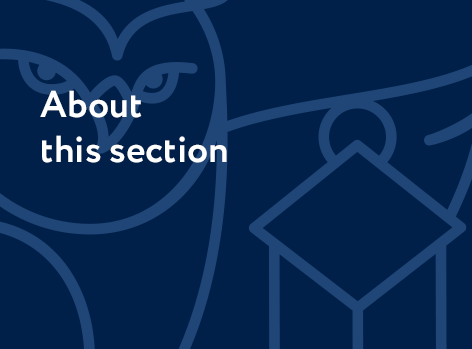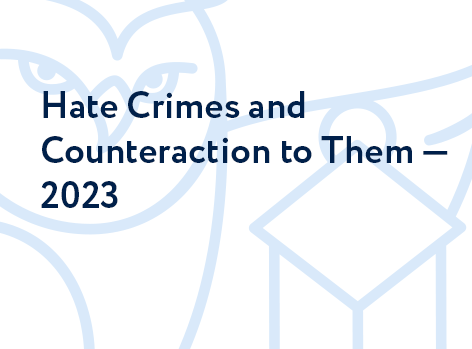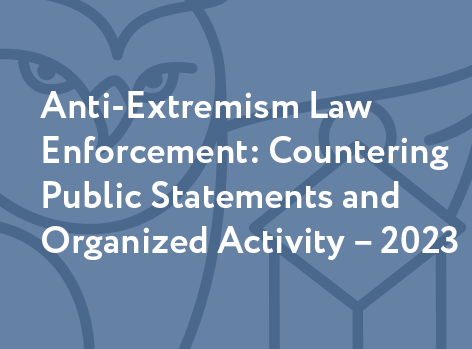Systematic racist and neo-Nazi violence
According to preliminary figures, in the first half of 2017 at least 19 people were victims of xenophobic and neo-Nazi violence, four of whom died. Here and subsequently for the purposes of comparison we will present figures currently available for the first six months of 2016. In the year earlier period four people were murdered and 56 were injured. As usual, we must note that the data for 2017 are known to be incomplete, perhaps drastically so.[1]
The geographical spread of the violence was somewhat different. Incidents were recorded in nine regions of the country (compared with eight regions a year earlier). The most number of attacks were recorded in the Rostov region (two people killed and two assaulted), followed by St. Petersburg (one person killed, one assaulted), the Republic of Mordovia, Tatarstan, and the Novosibirsk region (each recording two assaults). There was an unusually small number of victims in Moscow (two assaults).
As a result of a sharp fall in the number of recorded incidents of assault on the grounds of ethnicity, politically motivated attacks accounted for the largest group of victims. These were attacks on those considered “national traitors.” Eight people were attacked compared with seven a year earlier. This group included Alexei Navalny,[2] activists tending the memorial to Boris Nemtsov, participants in opposition pickets, an employee of the social media company VKontakte, and journalists.
The second largest group of victims remained “ethnic outsiders.” In the first six months of 2017 three people from Central Asia were assaulted, along with one person from the Caucasus, and another individual of unspecified “non-Slavic appearance.” The media reported on the murder in Kazan of Makhdzhub Tidzhani Khassan, a 24-year-old student from the Republic of Chad who was studying in the second year at the faculty of law of Kazan University. In total, six people were victims of violence (compared with 23 a year earlier).
There were further attacks on homeless people: two were killed and one assaulted (a year earlier one victim was recorded).
Only one assault motivated by religious hatred was recorded – an attack on a Tatar girl in a headscarf occurred in a share taxi in Mordovia. Another passenger of the taxi who intervened to help the girl was also attacked (a year earlier three assaults were recorded).
One notable incident was an attack on the reception area of the FSB office in Khabarovsk, which resulted in the deaths of two people in the building and the assailant himself, 17-year-old Anton Konev. A “neo-Nazi explanation” for the attack appeared relatively soon afterwards.[3]
Neo-Nazi videos with scenes of racist violence were actively distributed, including those produced by the long time known group Sparrows Crew and from a new group – Committee of Vigilance.
Threats were published against journalists and experts working on cases concerning incitement to hatred. Thus, Dmitry (Schulz) Bobrov disseminated the name, picture and office address of one of the experts, an employee of the St. Petersburg State University. A statement with threats against a journalist from Novaya Gazeta was also published.
Calls to participate in the war in Donbas all but disappeared. Only the Russian National Unity (RNE) continued to promote this.
In addition, there were almost no anti-immigrant raids, although the Moscow neo-Nazi group Citadel remained somewhat active.
Vandalism
In the first six months of 2017 we recorded at least 26 acts of vandalism in 19 regions of the country (a year earlier there were 24 acts in 19 regions).
The religious sites that were most often desecrated belonged to Jehovah’s Witnesses, which is clearly linked to the total ban imposed on them.[4] There were 11 acts of vandalism against buildings of Jehovah’s Witnesses, and seven against orthodox monuments (compared with five and three attacks respectively a year earlier). A protestant church in Voronezh and a Pentecostal building in the Tula region were also vandalised. There were slightly fewer incidents related to other targets than last year: six attacks compared with seven a year earlier.
The acts of vandalism included seven cases of graffiti, and 13 cases smashing windows and similar damage (this compares with 14 cases of graffiti and six cases of criminal damage a year earlier). However, there were incidents involving more serious acts of violence – five cases of arson and one bombing (last year there were three cases and one case respectively).
Criminal Prosecution
For violence
In the first six months of 2017 at least five convictions involving sixteen people were handed down in five regions for violence in cases where the court identified hatred as a motive (a year earlier there were 11 convictions in 11 regions involving 18 people). These people were convicted for hooliganism, inflicting serious bodily harm, and battery. In two cases, convictions were also reached under Article 282 of the Criminal Code (inciting ethnic hatred) for specific far-right statements.
The most notable conviction was handed down by the Babushkinsky District Court of Moscow to Maxim ‘Tesak’ (Hatchet) Martsinkevich, the leader of the far-right movement Restrukt, and nine of his associates. On 27 June, the court sentenced Martsinkevich to 10 years in prison, and the others to between three and ten years for a series of attacks on those whom they considered drug dealers.
Also noteworthy is the conviction of Sergei Kosyrev in St. Petersburg on 30 May for the high-profile murder of the journalist Dmitry Tsilikin. The murderer was sentenced to eight-and-a-half years in prison. Hatred towards gay people was not acknowledged as a motive for the murder, although Kosyrev himself explained the crime on those grounds.
The following sentences for violence motived by hatred were handed down:
- One person was sentenced to 14 years in prison;
- Four people received sentences of up to 10 years in prison;
- Five people got sentences of up to five years in prison;
- Three people got sentences of up to three years in prison;
- One person received a suspended sentence;
- Two people were sentenced to corrective labour.
We are aware of only one case where compensation for moral damages was paid to the victim – totalling 250,000 roubles.
For vandalism
We are aware of two sentences against four people handed down in the Altai and Kirov regions relating to criminal cases involving ethno-religious and neo-Nazi vandalism (a year earlier – three sentences were handed down to four people in three regions).
Both sentences applied Article 214 Part 2 of the Criminal Code (vandalism motivated by religious hatred and enmity). In one case the charge included more serious articles, and those convicted were sentenced to longer prison terms. In another, relating to the desecration of military memorials, two youths received one-year prison sentences.
For public statements
At least 95 sentences were handed down to 110 people in 49 regions for statements deemed to be extremist or expressing support for terrorism (a year earlier 101 sentences against 114 people were handed down in 53 regions). These figures relate only to sentences that we do not consider inappropriate (we only regarded a few cases as inappropriate during the period under report).
The majority of sentences (88 out of 95) applied Article 282 of the Criminal Code. 13 sentences applied Article 280 (public appeals to extremist activity).
In the case of some charges, articles 282 and 280 of the Criminal Code were combined with other articles, including for violence or vandalism. In one case, a charge of justifying Nazi crimes was included (Article 3541 of the Criminal Code).
Four sentences applied Article 2052 (public appeals to terrorist activity). In the case of three sentences (including against members of Misanthropic Division)[5] Article 2052 was applied for propaganda in support of banned Ukrainian organisations (Right Sector, Ukrainian National Assembly-Ukrainian National Self-Defence (UNA-UNSO) and others). The fourth sentence was handed down in Kazan to Ramil Ibragimov, the head of the Union of Young Leaders of Innovation for defending a massacre in a gay club in the USA.
In February 2017, an inhabitant of the village of Syoika (Altai Republic) received a suspended sentence of one-and-a-half years for reposting an appeal for the secession of Siberia from the Russian Federation (Article 2801 Part 2 of the Criminal Code).
The distribution of punishments for public statements was as follows:
· 27 people received prison terms;
· 52 people received suspended sentences with no further measures applied;
· 13 people received fines of various magnitudes;
· 3 people were sentenced to correctional labour;
· 10 people were sentenced to compulsory labour;
· 4 people were sent to compulsory medical treatment;
· One person was released following an expression of remorse.
A relatively large number of those convicted (27 people) received prison sentences. The majority of these were either sentenced to prison terms because they were also found guilty of other crimes, or those convicted published entries on social media from prison, as a result of which their prison sentences were extended (there were three such cases).
Several of those convicted were repeat offenders (four people, including Yury Ekishev, the leader of the movement ParaBellum and a member of the People’s Militia of Russia, who received a one-and-a-half year prison sentence for publishing two anti-Semitic articles). Along the same lines, in terms of the identity and previous convictions of the accused,[6] was the high-profile conviction of Dmitry Dyomushkin, the former head of the banned organisations Russians, Slavic Union, and Slavic Power. On 25 April 2017 the Nagatino Regional Court in Moscow sentenced Dyomushkin to two-and-a-half years in a minimum-security penal colony for publishing two pictures on the social media site VKontakte.[7]
However, as far as we are aware, four people received prison sentences in cases where the circumstances listed above did not apply (or we were not informed about them). One sentence was handed down in Magnitogorsk for appeals on social media to xenophobic violence and support for the banned Ukrainian group Right Sector amounting to two years and six months in prison. The other three prison sentences appear to us to be inexplicably harsh – in Bryansk (Part 2, Article 280 of the Criminal Code and Part 1, Article 282 of the Criminal Code), in Nizhnevartovsk and in the Krasnodar region (only Part 1 Article 282 of the Criminal Code) for xenophobic publications and statements on VKontakte (we do not know the content of these publications).
The number of suspended sentences increased compared with last year and stood at just less than half of all convictions (52 out of 110). Among those who received suspended sentences were Nikolai Bondarik, a well-known nationalist from St. Petersburg, who received a five-year suspended sentence for publishing a xenophobic post on social media, and Olga Avilkina, a member of the Freedom (Volya) party, who was sentenced to one-and-a-half years in prison for distributing by email an “Appeal to those serving in the Russian Armed Forces”, which had twice been banned.
The majority of the sentences handed down were for content posted online – 90 of 95 cases. This is even more than the 90% share recorded a year earlier, not to mention the average figure of 85% recorded in recent years.
Content was posted as follows
· On social media – 85 incidences (71 on VKontakte; two on Odnoklassniki, one on Facebook, in 11 cases the name of the social network was not indicated);
· One post on local networks;
· One post on a Livejournal blog;
· One comment on an online news site;
· In two cases, the site where the material was posted was not indicated.
Half as many sentences were handed down for offline propaganda in this six-month period compared with the same period of 2016: five cases against ten last year. The profile of these sentences was as follows:
- Two convictions for statements shouted during an assault (including in the case of the sentence of Tesak and his accomplices);
- One unidentified episode of far-right propaganda;
- Two cases involving the public performance of songs.
The Federal List of Extremist Materials
In the first half of 2017, the Federal List of Extremist Materials was updated 12 times, 157 items were added (compared with 305 a year earlier) and the total number of items increased from 4016 to 4173. It appears that the order issued by the Prosecutor General in March 2016 which set out the procedure for banning extremist materials[8] has finally started to be applied.
As in the past, the items added to the list are varied. In the first half of 2017 the list was expanded to include the following materials.
- 102 produced by contemporary Russian nationalists;
- Two by other nationalists;
- Two extremely radical anti-Russian speeches by Ukrainian activists (this is the third year we separate these texts from those by other nationalists);
- 23 produced by Islamic fighters and other appeals by political Islamists to violence (numerous videos with appeals to armed jihad);
- 10 other Islamic materials;
- Two produced by the Jehovah’s Witnesses;
- One produced by Orthodox fundamentalists;
- Four miscellaneous texts agitating for disorder and violence (including materials produced by anarchists);
- Seven non-violent texts criticising the Russian Orthodox Church and religion;
- One text produced by the Christian human rights organisation Voice of the Martyrs criticising Islam;
- Two texts produced by peaceful opposition groups;
- One item that was clearly banned by mistake.
Organisations Banned for Extremism
In the first half of 2017 three organisations were added to the Federal List of Extremist Organisations published by the Ministry of Justice (no organisations were added in the same period of 2016). Specifically, in May 2017 the far-right group Frontier of the North was added to the list following a ruling of the Syktyvkar City Court in Komi Republic on November 23, 2016. As a result, there are now 60 organisations on the list (not including the 27 viewed as terrorist organisations). Their further activity is punishable under article 2822 of the Criminal Code.
Other Administrative Measures
Administrative prosecution
In the first half of 2017 at least 152 people[9] (against 132 a year earlier) received administrative punishments under Article 20.3 of the Code of Administrative Offences (propaganda and public display of Nazi paraphernalia or symbols and those of extremist organizations) and Article 20.29 (mass distribution of extremist materials, or their production or storage with the aim of mass distribution). However, it should be noted that our data here are far from complete.
We are aware of 51 people who were convicted for public displays of symbols (compared with 54 a year earlier), largely on social networks. The symbols were usually those of the far-right. In five cases they featured emblems of the Ukrainian group Right Sector or ISIS, both of which are banned in Russia. In general, those responsible were given fines of between one and three thousand roubles. Five people were put under administrative arrest.
92 people were convicted for distributing banned materials (compared with 66 a year earlier). These included songs of far-right groups and of the singer Timur Mutsurayev, alongside several Islamist videos. Those convicted received in most cases fines of between one and five thousand roubles, but two people were put under administrative arrest.
Activities of prosecutors relating to the internet
Prosecutors continue to actively fight extremist content on the internet by blocking access to banned material (or material they consider dangerous).
According to publicly available information, the system of internet filtering based on the Unified Register of Banned Websites was expanded by 82 sites, which had been blocked by court order for extremism (a year earlier the number was 253).
The blocking of sites without a court order at the request of the Prosecutor General under the Lugovoy law has advanced rapidly: in the first half of 2017 650 internet resources were blocked (compared with 278 a year earlier).
The two registers of blocked sites partly overlap.
The following materials were included in the registers over the past year:
· Writings of contemporary Russian nationalists (Kolovrat, Zyklon B, Argentina, the poetry of Alexander Kharchikov);
· Fascist classics (the works of Hitler, Mussolini, Himmler);
· Appeals to violence by Muslim fighters and other political Islamists (include appeals to go to Syria);
· Other Muslim works (the books of Said Nursi, materials of banned organisations, including Hizb ut-Tahrir and others);
· Materials of Ukrainian organisations, including those banned in Russia;
· Other Ukrainian materials;
· Materials calling for riots or violence against the authorities;
· Materials of peaceful oppositions groups;
· Unidentified works.
[1] In the report covering the first half of 2016 we reported that 1 person had been murdered, 30 injured and two people received death threats. See Vera Alperovich, Natalia Yudina “Evolution and regression: xenophobia and radical nationalism in the first half of 2016” // SOVA Center. 2016. 13 June (http://www.sova-center.ru/racism-xenophobia/publications/2016/07/d35018/).
[2] Activists from SERB attacked Alexei Navalny // SOVA Center. 2017. 27 April (http://www.sova-center.ru/racism-xenophobia/news/racism-nationalism/2017/05/d36957/).
[3] The young man was a member of the neo-Nazi group Stolz-Khabarovsk (a small far-right group that cooperates with the local cell of Occupy Pedophilia headed by Maxim Martsinkevich). There were also claims that Konev had converted to Islam and was driven by a desire to pursue jihad.
[4] Russia’s Supreme Court ruled to liquidate the Administrative Center of Jehovah’s Witnesses in Russia // SOVA Center. 2017. 20 April (http://www.sova-center.ru/misuse/news/persecution/2017/04/d36871/).
[5] For more details, see: Members of the Misanthropic Division movement convicted in Moscow // SOVA Center. 2017. 20 June (http://www.sova-center.ru/racism-xenophobia/news/counteraction/2017/06/d37326/).
[6] Dyomushkin had repeatedly been the subject of criminal and administrative proceedings and violated his restricted travel status.
[7] A banner with the slogan “November 4, Russian March, Russian Rule in Russia” overlaying an imperial flag; and a picture of a child with the slogan “November 4, Russian March, only pure white children…and adults”.
[8] For more detail see: Maria Kravchenko “Unlawful anti-extremism in November 2016” // SOVA Center. 2016. 5 December (http://www.sova-center.ru/misuse/publications/2016/12/d35943/).
[9] 9 people were convicted under both articles of the Code of Administrative Offences.



